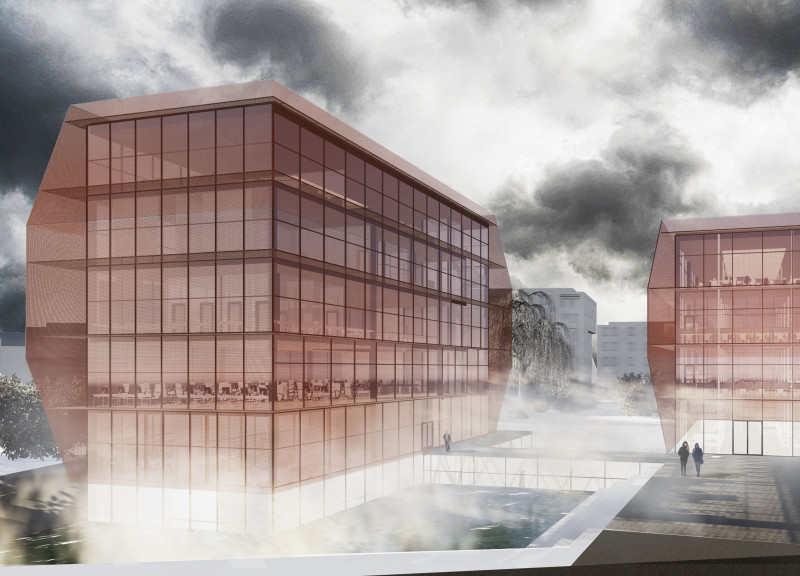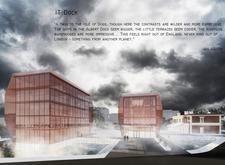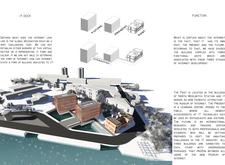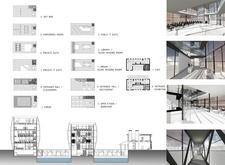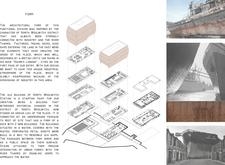5 key facts about this project
The architecture of this project is characterized by a thoughtful approach to materiality and spatial organization. The primary materials employed include reinforced concrete, steel, glass, and sustainable wood. These materials not only ensure structural integrity but also foster a sense of warmth and receptivity, inviting users and visitors alike to engage with the space. The strategic use of glass allows for generous natural light, reducing the need for artificial lighting and emphasizing the connection between indoor and outdoor environments.
Functionally, the design caters to a multi-faceted program, accommodating social interactions, individual reflections, and collaborative endeavours. The layout is intuitively planned, where public and private spaces are clearly delineated yet cohesively connected. Common areas promote gatherings, while quieter zones are thoughtfully tucked away, providing opportunities for solitude and contemplation without distractions from the more vibrant communal spaces.
One unique aspect of this architectural project lies in its commitment to sustainability. The presence of green roofs and walls not only enhances the aesthetic quality of the building but also contributes to biodiversity and insulation. The landscape design integrates native plant species, which require minimal irrigation while promoting local wildlife, illustrating a seamless relationship between architecture and ecology. This integration challenges traditional paradigms, emphasizing the importance of environmental responsibility within architectural practices.
In addition to these principles, the project demonstrates a keen understanding of its cultural context. By incorporating elements inspired by local traditions and craftsmanship, the design fosters a sense of belonging and pride within the community. Details such as intricate woodwork, locally sourced materials, and patterns reflecting the regional heritage serve to ground the project in its location, ultimately enhancing the user experience.
The architectural designs exhibit a balance of geometric forms and organic lines, creating a visually appealing structure that stands in dialogue with its surroundings. The façade's textures and finishes are carefully selected to echo the natural environment, with colors that harmonize with the landscape. This careful selection of materials reflects a commitment to aesthetic integrity while ensuring longevity and durability.
Beyond the surface, the architectural plans exhibit thoughtful circulation patterns that facilitate movement and flow. The organization of spaces promotes interaction, creativity, and productivity, allowing the project to fulfill its intended function effectively. Architectural sections reveal the interplay between different levels and spaces, emphasizing how the design prioritizes both accessibility and user engagement.
In sum, this architectural project reflects a comprehensive approach that integrates thoughtful design with environmental consciousness and cultural relevance. The combination of innovative solutions to challenges, attention to detail, and a respectful dialogue with the site creates a meaningful architectural solution. Readers are encouraged to delve deeper into the architectural plans, sections, and overall design concepts to gain a fuller understanding of the project’s nuanced and thoughtful execution. Exploring these architectural elements will provide insights into the sophistication of the design and its meaningful impact on the community.


